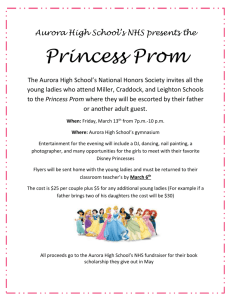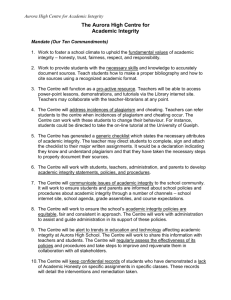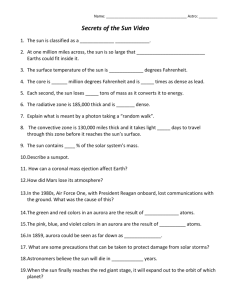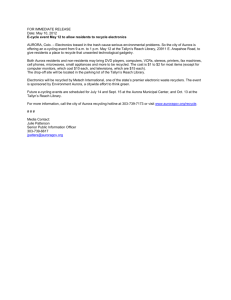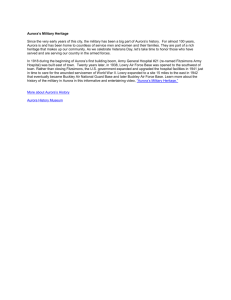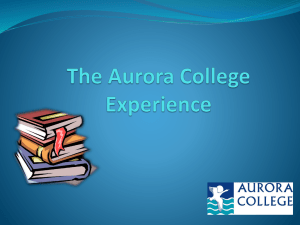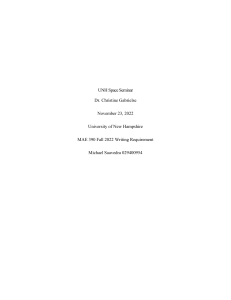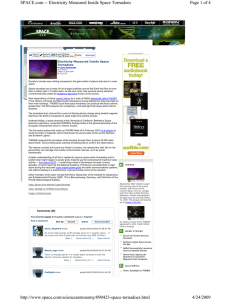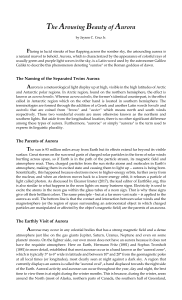AURORA IN YOUR BACKYARD – teacher sheet
advertisement
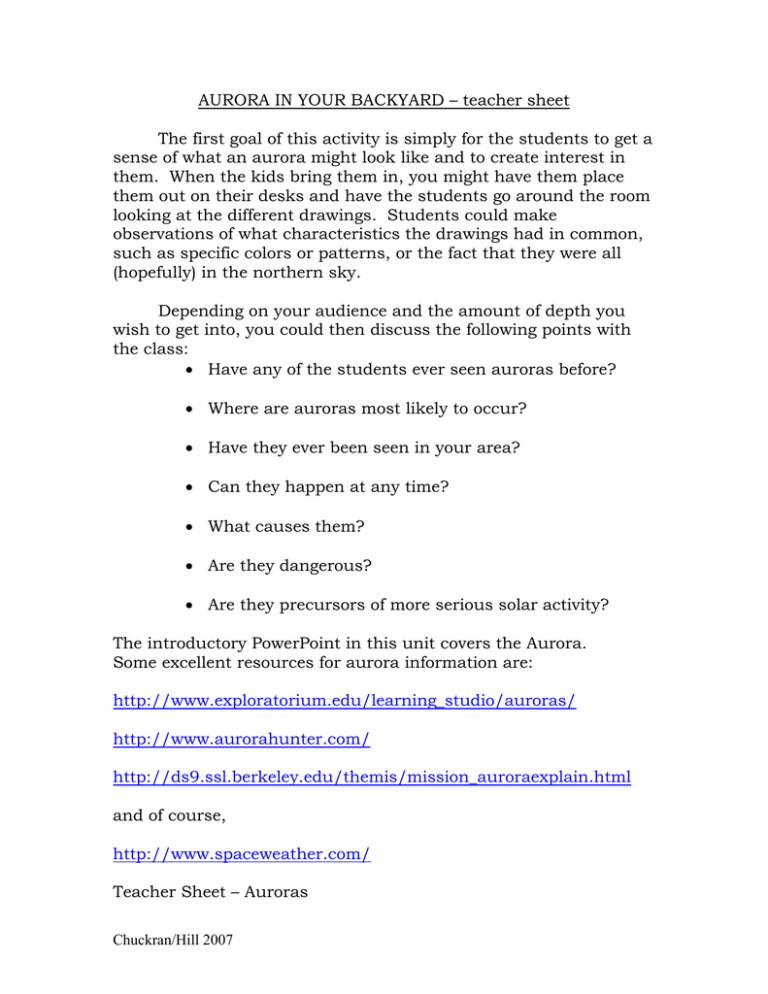
AURORA IN YOUR BACKYARD – teacher sheet The first goal of this activity is simply for the students to get a sense of what an aurora might look like and to create interest in them. When the kids bring them in, you might have them place them out on their desks and have the students go around the room looking at the different drawings. Students could make observations of what characteristics the drawings had in common, such as specific colors or patterns, or the fact that they were all (hopefully) in the northern sky. Depending on your audience and the amount of depth you wish to get into, you could then discuss the following points with the class: • Have any of the students ever seen auroras before? • Where are auroras most likely to occur? • Have they ever been seen in your area? • Can they happen at any time? • What causes them? • Are they dangerous? • Are they precursors of more serious solar activity? The introductory PowerPoint in this unit covers the Aurora. Some excellent resources for aurora information are: http://www.exploratorium.edu/learning_studio/auroras/ http://www.aurorahunter.com/ http://ds9.ssl.berkeley.edu/themis/mission_auroraexplain.html and of course, http://www.spaceweather.com/ Teacher Sheet – Auroras Chuckran/Hill 2007 The Aurora Borealis is one of nature’s great wonders, and is one of the most asked-about phenomena in the earth science curriculum. With some background information, it is a concept that high school students can understand. However, it takes a few minutes to explain. Here are some basic points. • The sun is constantly releasing a stream of particles (mostly protons and electrons) that strike the Earth • The particles interact with Earth’s magnetic field and with neutral oxygen and nitrogen atoms in the atmosphere. • The particles energize the O and N and cause them to move to excited states. • The O and N return to their normal states by releasing visible light, which we see as the aurora. • O is responsible for the green color, while N gives us the red. • The process is similar to the light in a neon sign. • The following website has an excellent list of aurora FAQ’s. http://www.noaa.gov/questions/question_030502.html Chuckran/Hill 2007
